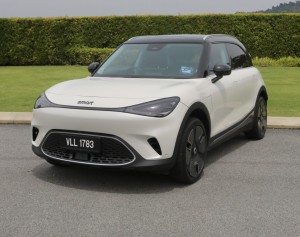Two lanes merge: What drivers need to know about the 'zipper method'
By DPA | 26 August 2021
BERLIN: Two lanes of traffic are headed in the same direction, then one lane ends. What happens next?
The drivers all politely merge into one lane? Not always, as anyone who's ever driven through a construction site on a highway will know.
Ideally, two lanes merging will happen seamlessly using what's known as the zipper method.
This applies when one lane ends on a road with several lanes in one direction, and the cars that can no longer keep driving are forced to drive in front of others from the lane beside them.
It gets its name from zip-like behaviour of the flow of two lanes merging into one when viewed from above.
When merging, all drivers are called upon to leave ample space for pulling in front of others and they will be indicating their intention to change lane in good time.
But of course that's just in theory.
Because in practice, things often go wrong. Not everyone wants to let other cars pull in ahead of them, especially when there's a bottleneck on the highway that's causing you a delay.
Those forced to switch lanes and merge with other cars can sometimes also pull out quickly or aggressively. Some may also try to switch lanes earlier in an effort to avoid getting stuck indicating at the end of the lane and waiting for someone to let you switch lanes.
While it's not forbidden to move lanes too early, it doesn't make a whole lot of sense, say the traffic safety experts at inspection agency Dekra. You're wasting lots of space and, depending on the traffic, you can contribute to a longer tailback of vehicles.
Traffic safety experts - and sometimes also road guidelines - say the responsibility is not just with those forced to change lanes.
Anyone driving next to a lane that is ending is expected to allow drivers to merge ahead of them and to take care that this is done safely.
The drivers allowing cars to merge in front of them are also often liable after accidents, according to the ADAC, Europe's largest car club, pointing to court rulings in Germany.
It can be just as unacceptable to force a lane change as it is to block it in such cases, and both parties can be held equally liable.
However it's important to remember that the zipper method does not apply when entering onto a highway, and you may only merge onto the highway if there is a large enough gap.
Those driving on the highway already have the right of way - even in a traffic jam, although in practice the zipper method may be used as a friendly gesture.
Tags
Autos News
Reviews

7.9
Xpeng G6 580 Pro: Fresh and fluidic

Guangzhou adventures: Zontes 368 scooter and 703 Adventure m...

Zontes motorcycle factory in Jiangmen: Running on a fast tra...

7.6
Maserati GranTurismo (Mk2) Modena: Sharp and smooth operator

6.8
Triumph Tiger 900 GT Pro: Multi-talented adventurer

Hyundai Ioniq 5 N: Born rascal

6.6
Husqvarna Svartpilen 401: Inspiring retro design

8.8
smart #1 (Premium): Agile, engaging, roomy, premium motoring
Videos

StarCarSifu Editors' Choice Awards 2024: Top winners

The Snowball – Lamborghini’s Heartwarming Christmas Story of...

EVOGO battery swapping solution showcased at IAA Mobility 20...
